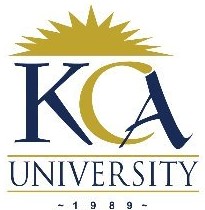 UNIVERSITY EXAMINATIONS: 2011/2012
UNIVERSITY EXAMINATIONS: 2011/2012
THIRD YEAR EXAMINATION FOR THE BACHELOR OF
SCIENCE IN INFORMATION TECHNOLOGY
BIT 4306 DISTRIBUTED DATABASES
DATE: AUGUST, 2012 TIME: 2 HOURS
INSTRUCTIONS: Answer Question ONE and any other TWO
QUESTION ONE
a) Explain the basic security features that need to be implemented in a database
system. (6 Marks)
b) Elaborate on the following types of database users
i) Schema-Dependent Global (3 Marks)
ii) Schema-Independent Global Users (3 Marks)
c) Define the following terms
i) Distributed database system (2 Marks)
ii) Distributed database management system (2 Marks)
iii) Distributed database system (2 Marks)
d) Explain the following types of database links
i) Connected User Link (2 Marks)
ii) Fixed User link (2 Marks)
iii) Current User Link (2 Marks)
iv) Shared Database Links (2 Marks)
e) Outline the syntax of naming schema objects in a distributed database (4 Marks)
QUESTION TWO
a) Identify FIVE reasons why allocation of fragments are carried out in a distributed
database (5 Marks)
b) Elaborate on any four features that are exhibited by DDBMS (8 Marks)
c) Distributed databases can be fragmented in many ways. Define the term
fragmentation and explain any three types of fragmentation that can be carried
out. (7 Marks)
QUESTION THREE
a) Describe the process of database name resolution, using relevant examples under
the following situations
i) When the Global Database Name Is Complete (3 Marks)
ii) When the Global Database Name Is Partial (3 Marks)
iii) When No Global Database Name Is Specified (3 Marks)
b) Elaborate on any three advantages of database distribution (6 Marks)
c) State the three steps carried out in query processing (3 Marks)
d) Explain why a database link is a one-way link (2 Marks)
QUESTION FOUR
a) Outline the various options for distributing a database (6 Marks)
b) Outline the following Query Optimization Operations
i) Nested loop (2 Marks)
ii) Sort-merge (2 Marks)
iii) Hash-join (2 Marks)
c) Giving reasons indicating whether the following statements are remote query
statement, remote update statement, distributed query statement, distributed
update statement (8 Marks)
i) SELECT * FROM scott.dept@sales.us.americas.acme_auto.com;
ii) UPDATE scott.dept@mktng.us.americas.acme_auto.com
SET loc = ‘NEW YORK’
WHERE deptno = 10;
iii) SELECT ename, dname
FROM scott.emp e, scott.dept@sales.us.americas.acme_auto.com d
WHERE e.deptno = d.deptno;
iv) BEGIN
UPDATE scott.dept@sales.us.americas.acme_auto.com
SET loc = ‘NEW YORK’
WHERE deptno = 10;
UPDATE scott.emp
SET deptno = 11
WHERE deptno = 10;
END;
COMMIT
QUESTION FIVE
a) Describe the concept of Remote Procedure Calls in the context of distributed
databases (8 Marks)
b) Outline the two main benefits offered by Location transparency (4 Marks)
c) Explain the main problem with cost based query optimisation (3 Marks)
d) Define the term catalogue as relating to distributed catalogue management
(3 Marks)
e) Explain the 2PL protocol (2 Marks)
